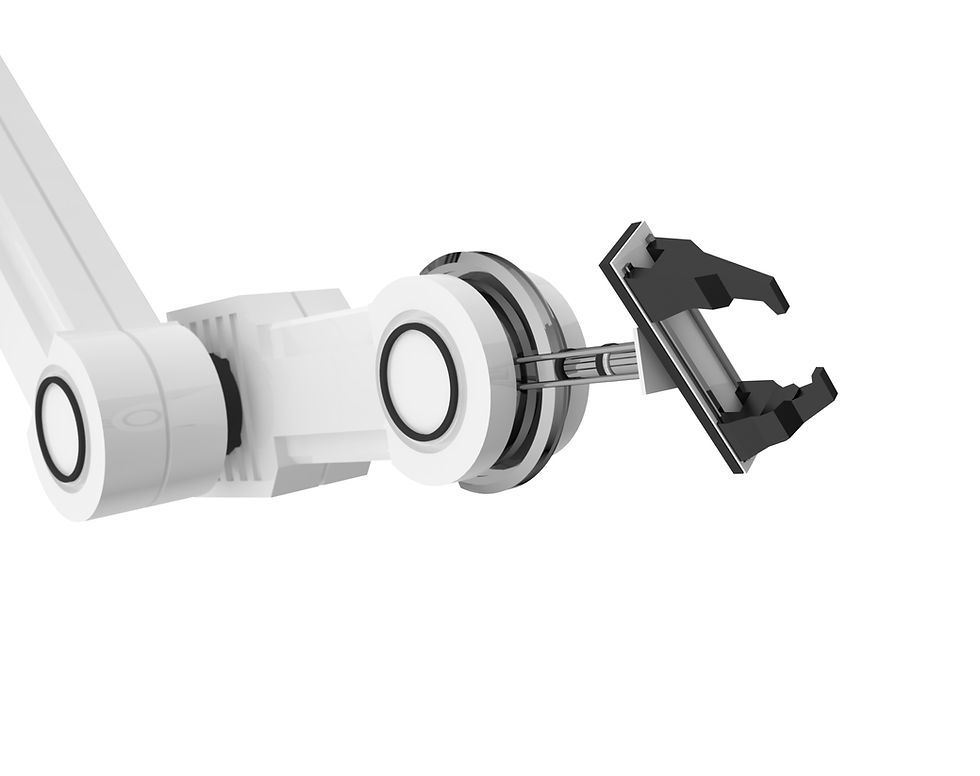Embarking on your Smart Enterprise journey
- FutureFactor360
- Oct 5, 2021
- 4 min read
FutureSense360 approach to Digital Transformation
Enterprises must acknowledge that there is no ‘one-best approach’ as they embark on their smart enterprise implementation journey. The point of take-off and evolution of various initiatives and use cases will be a measure of enterprise strategy, business imperatives, stakeholder alignment and organizational culture. The implementation journey is also a function of maturity state of key dimensions of Products, Plants, Processes and People Practices. Successful Industry 4.0/ Smart Enterprise implementation is indeed a very deliberate and thoughtful journey.
Based on our previous success stories and references to global frameworks and international standards, FutureSense360 has designed a comprehensive six step Smart Enterprise journey that organizations can adopt to scale their digital initiative programs successfully:

Step 1: Maturity Assessment
Maturity models contextualize the industry 4.0 and smart enterprises adoption roadmap and offer a comprehensive evaluation tool through which enterprises can:
Identify their current state maturity based on a pre-defined index
Determine target maturity levels for implementation
Identify gaps associated with realizing the desired maturity level
Built as a self-evaluation model, FutureSense360’s Smart Enterprise Maturity Assessment framework assesses maturity of key dimensions of Products, Plants, Processes and People across the levers of Process, Technology and People
A broad overview of the maturity assessment criteria is provided below:
The use cases across each of the dimensions evolve in complexity and capability, and can be mapped across the maturity paradigm
With the flexibility to roll-out the maturity assessment study both through the top-down and bottom-up approach, stakeholders can leverage this framework to map their current and desired state of maturity across each of the core organizational dimensions
Expected Outcome: Comprehensive mapping of current and desired smartness/ maturity levels for Products, Plants, Processes and People
Step 2: Business Impact Assessment
Target use cases need to evaluated using a Business Model Canvas to assess:
Business opportunity and benefits
Alignment with enterprise strategy
Customer/ business impact
Scale-up potential
Stakeholder involvement
Potential RoI
Expected Outcome: Business impact assessment helps determine the value creation potential and return on investment associated with identified use cases and helps stakeholders create a Business Value Proposition to strategically prioritize the implementation roadmap of target use cases
Step 3: Readiness Assessment
Successful implementation of Industry 4.0 requires an agile organization consisting of a network of collaborative teams (across Engineering, R&D, Production, Sales etc.) that operate in rapid learning and fast decision cycles enabled by technology, guided by a mutually beneficial goals, and executed through lean processes. Hence a Readiness Assessment helps understand the current readiness of the enterprise across the three levers of People, Process and Technology
Expected Outcome: Identifies the current readiness of the enterprise to evolve into desired maturity levels. Any gaps in readiness levels can be immediately addressed by taking corrective actions and interventions.
Step 4: MVP Scoping
A critical step in the i4.0 implementation journey is to define the overall scope and success metrics of the target initiatives to ensure relevant stakeholders are aligned on the expectations upfront.
Expected Outcome: Adopting an MVP approach to implementation allows organizations to emulate the core functionalities of the use case in a robust and cost-efficient manner and demonstrate the viability in shorter time period. Successful MVPs also allow project teams to better demonstrate the value creation potential to stakeholders and obtain their buy-in for scaling required investments and efforts
Step 5: Detailed Solutioning
Defining the technology solutioning strategy and implementation approach is a critical step in successful implementation. The activity aims to address pre-requisites across two levels: Operational and Technical
Operational: Define the roles and responsibilities of key stakeholders including Business, Corporate IT, Plant IT and CDO/CIO and ownership of implementation budget and success outcomes
Technical: Detailed technical scoping across the entire technology stack to create a standardized technology ecosystem architecture for the enterprise. Creating a holistic architecture across all use cases helps identify common technology elements and avoid any redundancies in effort and investments. Further, a key purpose of the solutioning exercise is to ensure minimal impact to existing systems and production activities during the implementation
Expected Outcomes: A replicable and scalable technology architecture required to successfully enable the identified Industry 4.0 initiatives
Step 6:
6a: Sourcing Strategy
Sourcing in today’s inter-connected digital world is increasingly becoming complex owing to multi-vendor context. The sourcing ecosystem is being redrawn with the emergence of boutique digital solution providers who are at the forefront of creating cutting-edge technology solutions and platforms.
It is critical for enterprises to identify best in class digital vendors that can address the digital imperatives of the enterprise and thoroughly evaluate all approaches associated with implementation:
In-house development
Solution provider
System integrator
A cost vs benefits analysis and capability assessment of potential technology partner will help identify the optimal sourcing strategy
6b: Implementation Support
Building a successful Smart Enterprise requires two key elements:
1. Successful MVP Scalability Plan: To realize the full potential of Industry 4.0, it is important to expand beyond just the MVP or Proof of concept. This requires enterprises to build a detailed MVP scale-up plan across the below hierarchies-
MVP Scalability Hierarchy : The MVP can be scaled in an organized manner for more effective monitoring of the efficiency and success outcomes of the initiatives. A phased approach also allows organizations to make directional changes and realign priorities on an ongoing basis:
In order to achieve this, we envisage the following tasks as pre-requisites:
Establish baseline expectations, KPIs and improvements envisioned in each identified hierarchy
Adopt a modular approach to select a minimal viable functional module for proof of concept and prototyping
Ensure requisite technology enablers and interfaces are in place and available before initiating the pilot implementation
2. Continuous feedback: Ensure a robust program governance and change management model is set-up to manage the implementation process
Program Management Responsibilities:
Create alignment between all stakeholders within the enterprise
Track progress of multiple Industry 4.0 projects in the context of the enterprise
Drive collaboration with ecosystem innovation partners
Define, assess, analyze execution, report ROI and drive continuous improvements to process and technology
Change Management Responsibilities:
Drive change management roadmap without causing disruptions to production, disappointing customers, overburdening employees, and hurting short-term cash flow
Drive cultural orchestration to mitigate resistance to change
Ensure training to novice users to perform tasks, activities in the context of new systems and platform
Key Takeaway
There is no standard template for enabling a smart enterprise. It varies depending on – organizational culture, scale of operations, complexity of technology architecture and the speed at which organization wishes to reinvent and innovate. However, adopting a structured approach as outlined in this blog will minimize the risks and costs associated with Industry 4.0 implementation.
If you would like to discuss how best your enterprise can embark on the Smart Enterprise transformation journey, please do not hesitate to contact us at info@futurefactor.co



Comments